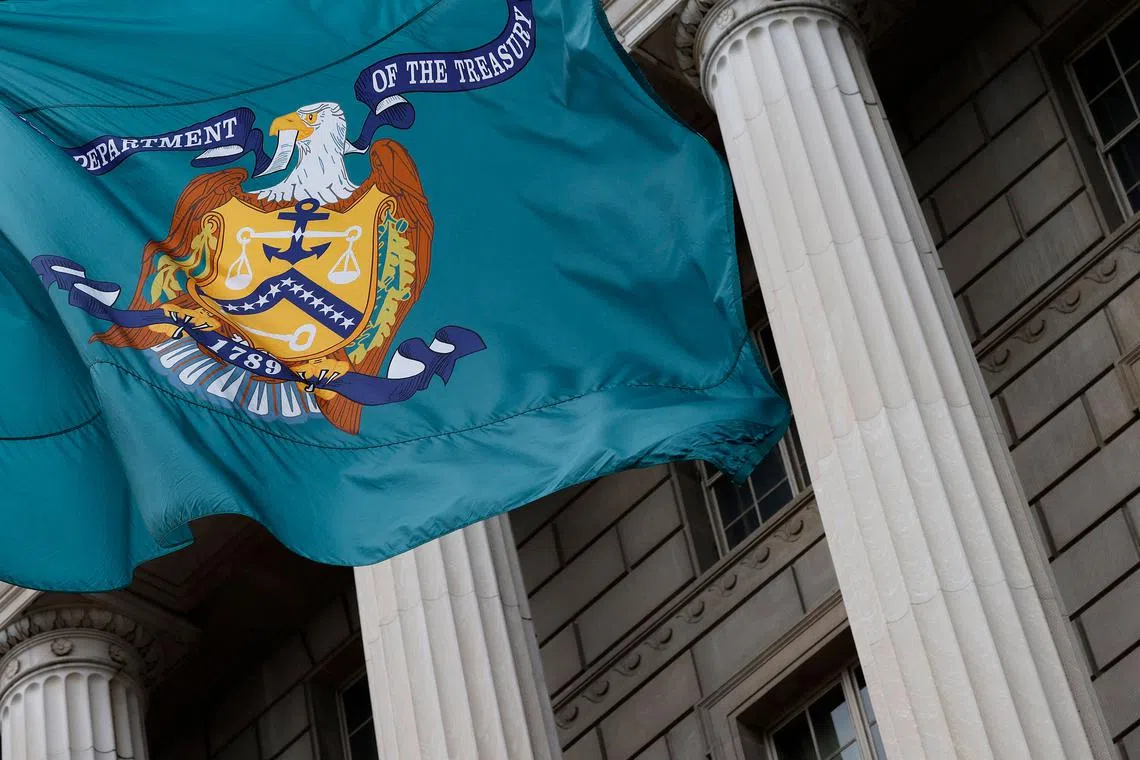Trillion-dollar Treasury vacuum coming for Wall Street rally
Sign up now: Get ST's newsletters delivered to your inbox

The US Treasury is expected to kick off a borrowing spree that by some Wall Street estimates could top US$1 trillion (S$1.35 trillion) by the end of the third quarter.
PHOTO: AFP
Follow topic:
WASHINGTON – With a debt ceiling deal freshly signed into law
This will be yet another drain on dwindling liquidity as bank deposits are raided to pay for it – and Wall Street is warning that markets are not ready.
The negative impact could easily dwarf the after-effects of previous stand-offs over the debt limit. The Federal Reserve’s programme of quantitative tightening has already eroded bank reserves, while money managers have been hoarding cash in anticipation of a recession.
JPMorgan Chase & Co strategist Nikolaos Panigirtzoglou estimates a flood of Treasuries will compound the effect of quantitative tightening on stocks and bonds, knocking almost 5 per cent off their combined performance in 2023.
The sales, set to begin on Monday, will rumble through every asset class as they claim an already shrinking supply of money: JP Morgan estimates a broad measure of liquidity will fall by US$1.1 trillion (S$1.5 trillion) from about US$25 trillion at the start of 2023.
With a default narrowly averted, the Treasury will kick off a borrowing spree that by some Wall Street estimates could top US$1 trillion by the end of the third quarter, starting with several Treasury bill auctions on Monday that total more than US$170 billion.
What happens as the billions wind their way through the financial system is not easy to predict. There are various buyers for short-term Treasury bills: banks, money market funds and a wide swathe of buyers loosely classified as “non-banks”. These include households, pension funds and corporate treasuries.
Banks have limited appetite for Treasury bills right now, because the yields on offer are unlikely to be able to compete with what they can get on their own reserves.
But even if banks sit out the Treasury auctions, a shift out of deposits and into Treasuries by their clients could wreak havoc. Citigroup modelled historical episodes where bank reserves fell by US$500 billion in the span of 12 weeks to approximate what will happen over the following months.
“Any decline in bank reserves is typically a headwind,” said Mr Dirk Willer, Citigroup Global Markets’ head of global macro strategy.
The most benign scenario is that supply is swept up by money market mutual funds. It is assumed that their purchases, from their own cash pots, would leave bank reserves intact. Historically the most prominent buyers of Treasuries, they have lately stepped back in favour of better yields on offer from the Fed’s reverse repurchase agreement facility.
That leaves everyone else: the non-banks. They will turn up at the weekly Treasury auctions, but not without a knock-on cost to banks. These buyers are expected to free up cash for their purchases by liquidating bank deposits, exacerbating a capital flight that has led to a cull of regional lenders and destabilised the financial system in 2023.
For now, relief about the United States avoiding default has deflected attention away from any looming liquidity aftershock. At the same time, investor excitement about the prospects for artificial intelligence has put the S&P 500 on the cusp of a bull market after three weeks of gains.
But that has not quelled fears about what usually happens when there is a marked downturn in bank reserves: Stocks fall and credit spreads widen, with riskier assets carrying the brunt of losses.
“It’s not a good time to hold the S&P 500,” said Mr Willer. BLOOMBERG

